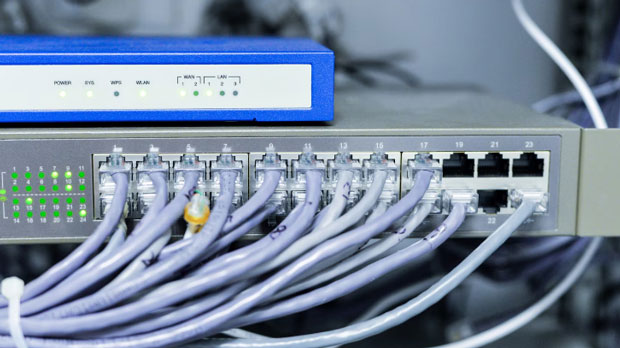How do proxies and VPNs help access blocked websites?
In today's digital world, accessing content on the internet can sometimes be difficult due to geographical restrictions, censorship, or government-imposed blocks. This is where proxies and Virtual Private Networks (VPNs) come into play. Both of these technologies enable users to bypass these restrictions by masking their actual location and creating a secure, encrypted connection to the web. While proxies act as intermediaries between a user and the internet, VPNs encrypt the user's entire internet connection. This article will delve deeper into how these technologies work, their differences, and their role in accessing blocked websites. Understanding the Basics: What is a Proxy?A proxy server is a tool that sits between the user's device and the internet. When a user connects to the internet through a proxy, their requests to websites first pass through the proxy server, which then forwards them to the targeted website. This means that the website sees the proxy server’s IP address rather than the user's actual one.Proxies can help users access blocked websites by masking the user's real location. For instance, if a website is restricted in a specific country, a user can use a proxy located in another country where the content is accessible. By doing so, the website will treat the user as if they are accessing it from that country, bypassing the geographical restrictions.However, proxies have limitations. They are generally not encrypted, meaning that data transmitted through them can be intercepted by hackers or other third parties. Additionally, some websites can detect proxy usage and block it, especially if the proxy is public or overused.How Does a VPN Work to Bypass Restrictions?A Virtual Private Network (VPN) works similarly to a proxy but with a significant difference in how it operates. A VPN establishes an encrypted tunnel between the user's device and a remote server. This encrypted connection ensures that no one, including hackers or even the VPN provider, can monitor the user's online activities. VPNs change the user's IP address, making it appear as though they are browsing from a different location.VPNs are particularly effective in bypassing internet censorship or content blocks. Since the user's traffic is encrypted and routed through a server in a different country, websites and services cannot easily detect their real location. This encryption adds an extra layer of security, making it much harder for third parties to intercept sensitive information.Furthermore, VPNs are more versatile than proxies in many ways. Not only can they help users access blocked websites, but they also protect the user's privacy and enhance security by masking all of their online activities. This makes VPNs ideal for those who need to maintain their online anonymity or access services restricted to specific regions.Key Differences Between Proxies and VPNsWhile both proxies and VPNs are used to bypass geographic restrictions, there are several important differences that users should consider before deciding which tool is best for their needs.1. Encryption: VPNs offer encryption, ensuring that all online traffic is secure. Proxies typically do not offer encryption, making them less secure when accessing sensitive websites or conducting financial transactions. 2. Privacy and Security: VPNs protect users' privacy by encrypting their traffic, making it nearly impossible for third parties to monitor or intercept their activities. Proxies, on the other hand, do not provide this level of security, which means that the user's data could be vulnerable to hacking.3. Speed and Performance: Since VPNs encrypt traffic, they can sometimes slow down internet speeds. Proxies, in contrast, are generally faster because they do not encrypt traffic, though this comes at the cost of security and privacy.4. Compatibility: VPNs work on all internet traffic, including apps, websites, and services, making them a more comprehensive solution. Proxies, however, often only work with web browsers, limiting their use for accessing content from other applications.5. Detection and Blocking: Proxies are more susceptible to detection and blocking, especially if they are free or widely used. VPNs are harder to detect due to their encryption and the ability to select servers from different locations, making them a more reliable option for accessing restricted content.When to Use a Proxy vs. a VPN?The choice between a proxy and a VPN depends largely on the user's needs and priorities. If someone needs a fast and simple solution to access a website that is blocked in their region, a proxy may be sufficient. It can help users change their IP address quickly and bypass simple geographic restrictions. However, users should keep in mind that proxies do not offer encryption or privacy, which could pose risks when accessing sensitive content.On the other hand, if privacy, security, and reliability are important, a VPN is the better option. It provides encrypted traffic, protects user data from third parties, and is less likely to be detected or blocked by websites. VPNs are ideal for individuals who require anonymity, wish to protect personal information, or need to access a wide variety of content safely.For those accessing services like banking or private accounts, a VPN is generally the safer choice due to its added security layer. Proxies are more suited for general browsing or accessing geographically restricted content that doesn’t involve sensitive data.Additional Benefits of Using Proxies and VPNsIn addition to bypassing website blocks, both proxies and VPNs offer several other benefits:- Bypass Censorship: Proxies and VPNs are often used in countries where internet censorship is common. These tools allow users to bypass government-imposed restrictions, enabling access to social media platforms, news outlets, and other restricted services.- Improved Streaming Access: For users who want to access streaming platforms or video content not available in their country, proxies and VPNs can help bypass these restrictions. By connecting to a server in a country where the service is available, users can enjoy unrestricted access to their favorite content.- Safe Public Wi-Fi Use: Public Wi-Fi networks are often insecure and can expose users to hacking risks. By using a VPN, users can encrypt their connection and ensure that their data remains safe, even when connected to public networks.- Cost Efficiency: Proxies and VPNs can also help reduce the cost of accessing certain services. By connecting to servers in different countries, users may be able to find lower prices for products, travel bookings, or subscription services that are subject to regional pricing.Conclusion: Choosing the Right Tool for Accessing Blocked WebsitesBoth proxies and VPNs serve as effective tools for accessing blocked websites, but their differences in terms of security, performance, and functionality should guide the user's choice. While proxies may offer a faster and simpler way to bypass restrictions, VPNs provide more comprehensive protection, privacy, and encryption, making them a more reliable solution for accessing content securely.For users who prioritize speed and ease of use, proxies may suffice. However, for those who require high levels of security, privacy, and anonymity, a VPN is the better option. Ultimately, the choice depends on the level of protection and reliability the user needs, as well as the type of content they wish to access.
2025-01-17

























































